In the intricate tapestry of the natural world, insects represent some of the most fascinating examples of evolutionary adaptation and intelligence. Despite their tiny brains—some no larger than a pinhead—many insect species display remarkable problem-solving abilities, complex social structures, and ingenious defense mechanisms that have helped them survive for millions of years. While we often think of intelligence in terms of brain size or capacity for learning, insects challenge this notion by showcasing that sophisticated behaviors can emerge from relatively simple neural systems. From elaborate traps to chemical warfare, from mimicry to mathematical precision, these tiny creatures have developed astonishing strategies to outsmart their predators and thrive in almost every habitat on Earth.
Ants: The Collective Intelligence Champions
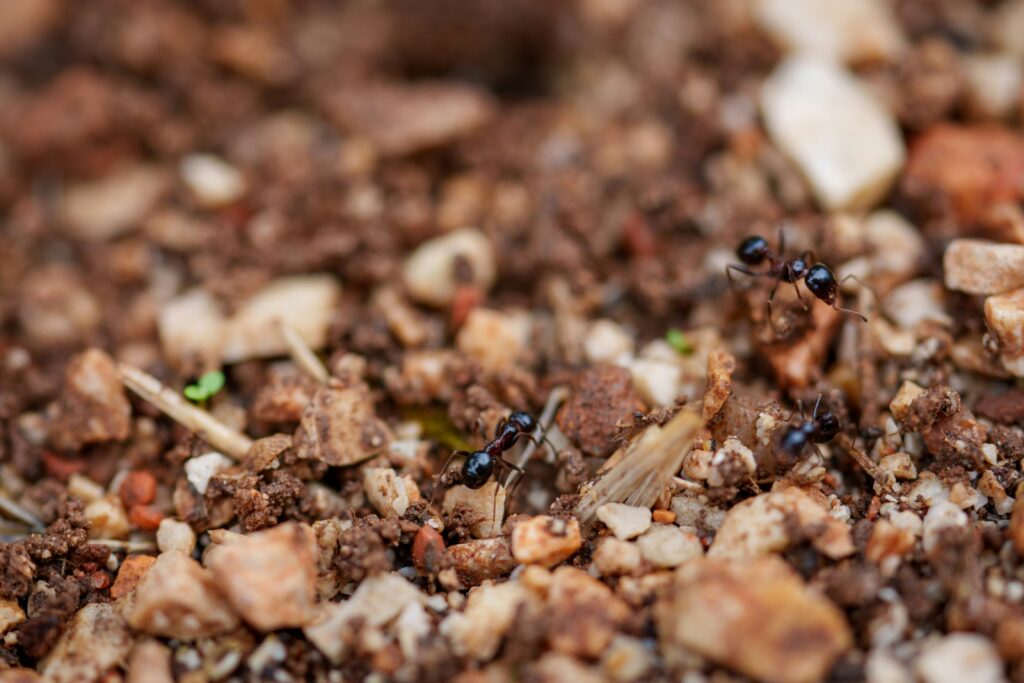
Ants stand out as perhaps the most intellectually impressive insects, demonstrating remarkable collective intelligence through their intricate social colonies. When facing predators, certain ant species form defensive formations, creating living bridges or rafts during floods to ensure colony survival. Fire ants, for example, can link their bodies together to create floating rafts that can survive for weeks during flooding, protecting their queen and larvae in the center of this living vessel. Some species, like the Malaysian exploding ant, have evolved the ultimate sacrifice—they can contract their abdominal muscles so forcefully that their bodies rupture, spraying toxic chemicals at predators in a deadly final act of colony defense. This collective approach to survival represents a different kind of intelligence—one based not on individual brilliance but on sophisticated cooperation that creates an entity far more intelligent than the sum of its parts.
Bees and Their Mathematical Precision

Honeybees display remarkable mathematical and navigational intelligence that helps them avoid predators while maximizing foraging efficiency. They construct perfectly hexagonal honeycomb cells, a shape that provides maximum storage space with minimal construction material—a solution to a complex geometric problem that human mathematicians only formally proved in 1999. When scout bees discover food sources, they communicate the exact location through the famous “waggle dance,” conveying precise distance and directional information relative to the sun’s position. This sophisticated communication system allows colonies to rapidly adapt their foraging patterns when predator threats emerge in certain areas. Additionally, bees can recognize human faces, count to four, and understand the concept of zero—cognitive abilities once thought impossible for insects—allowing them to identify recurring threats and avoid dangerous situations.
Trap-Door Spiders: The Patient Ambush Predators

While technically arachnids rather than insects, trap-door spiders deserve mention for their extraordinary hunting intelligence. These remarkable creatures construct perfectly camouflaged burrows with hinged “doors” made from soil, vegetation, and silk that blend seamlessly into the surrounding environment. The spider waits inside, holding the door slightly ajar with its legs, feeling for vibrations that signal potential prey—or threats—passing nearby. When a meal approaches, the spider bursts from its hiding place with astonishing speed; when a predator approaches, it can rapidly retreat and seal its underground fortress. Some species even create decoy burrows or false tunnels to confuse predators that might break through the main entrance. This combination of engineering skill, patient strategy, and rapid threat assessment showcases remarkable problem-solving abilities for a creature with a brain smaller than a grain of rice.
Praying Mantises: The Visual Hunting Specialists

Praying mantises possess remarkable visual intelligence that aids both their predatory lifestyle and their ability to avoid becoming prey themselves. With stereoscopic vision provided by large compound eyes, mantises are the only insects known to have 3D vision similar to humans, allowing them to judge distances with extraordinary precision. Their neck can rotate 180 degrees, giving them an almost panoramic awareness of potential threats approaching from behind. When faced with predators, many mantis species employ sophisticated deimatic displays—suddenly revealing hidden bright colors on their wings and adopting threatening postures to startle attackers. Some mantis species have evolved perfect camouflage resembling flowers or leaves, allowing them to hide in plain sight while ambushing prey and avoiding larger predators. Their ability to recognize patterns and adapt their hunting strategies based on different prey types suggests a level of cognitive flexibility rare in the insect world.
Jumping Spiders: The Tiny Geniuses
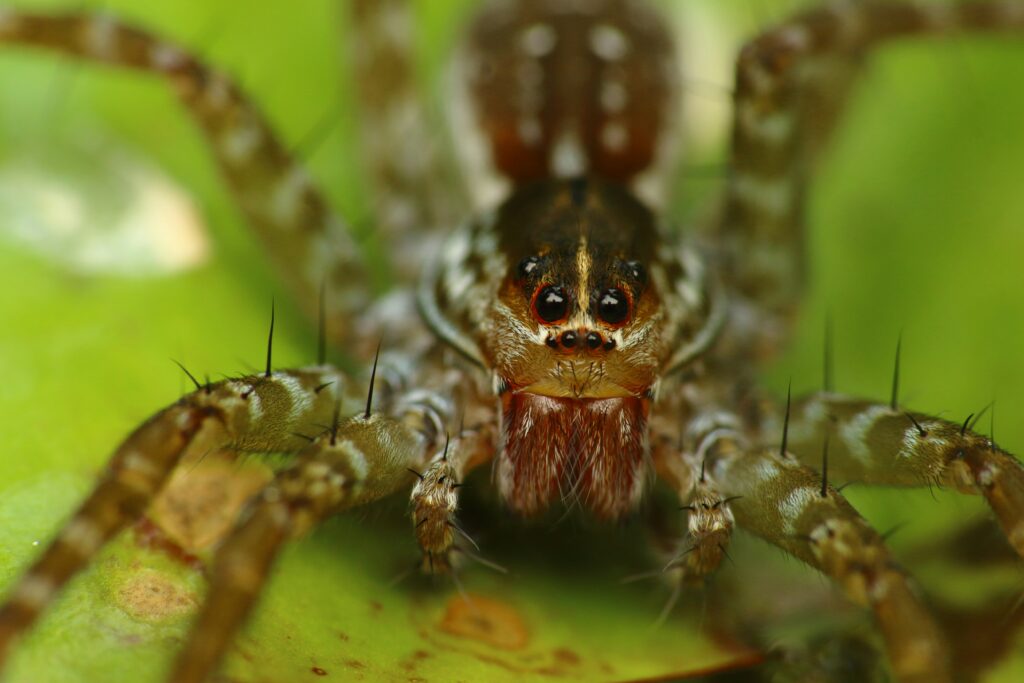
Jumping spiders, though technically arachnids, represent some of the most intelligent arthropods on the planet with problem-solving abilities that rival many vertebrates. These tiny hunters possess remarkable vision through their four pairs of eyes that allow them to plan complex hunting routes and execute perfectly calculated jumps to capture prey or escape threats. Research has shown they can devise detours and alternative paths to reach objectives—indicating an ability to create mental maps and plan ahead rather than simply reacting to immediate stimuli. Particularly impressive is their ability to develop hunting strategies tailored to specific prey types, adapting their approach based on previous experiences and the potential dangers posed by their intended target. Some jumping spiders even engage in “aggressive mimicry,” imitating the appearance and behavior of ants to safely infiltrate ant colonies for hunting or to avoid their own predators.
Cockroaches: The Ultimate Survivors
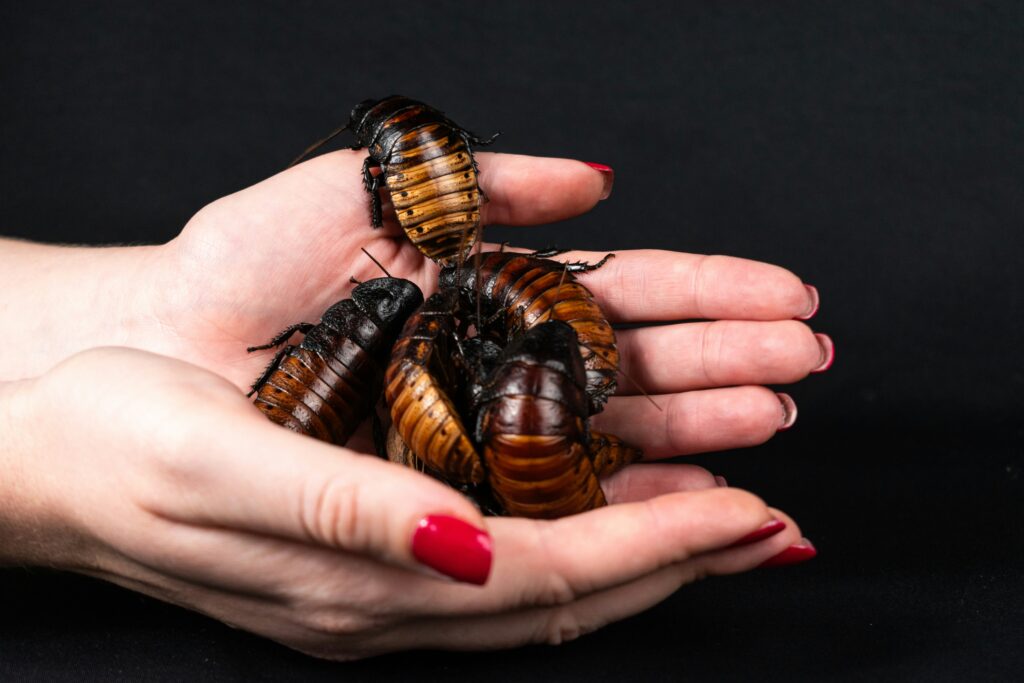
Cockroaches have earned their reputation as nature’s ultimate survivors through remarkable adaptations that allow them to outsmart countless predators and environmental threats. Their neural system can process information so rapidly that they can detect air movements from an approaching predator and begin escape maneuvers within 8.2 milliseconds—before the predator’s attack has even fully begun. Cockroaches can learn and remember solutions to mazes, demonstrating basic learning abilities that help them avoid repeated dangers in their environment. They can survive without their heads for weeks (breathing through spiracles in their bodies), endure radiation levels that would kill humans, and go without food for a month—adaptations that allow them to persist through catastrophic events that eliminate their predators. Perhaps most impressively, cockroaches demonstrate evolutionary intelligence through behavioral immunity—changing their social behavior when exposed to pathogens, effectively creating quarantine conditions to protect their communities.
Bombardier Beetles: The Chemical Warfare Specialists

Bombardier beetles have evolved one of the most sophisticated defense mechanisms in the insect world, essentially creating a living chemical weapon. When threatened, these remarkable beetles mix chemicals from two separate abdominal glands, which react explosively to create a boiling, noxious spray that they can aim with remarkable precision at predators. The chemical reaction reaches temperatures of 100°C (212°F), hot enough to burn and temporarily blind would-be attackers, forcing them to retreat immediately. What makes this system particularly intelligent is the beetle’s ability to precisely control the reaction timing and direction, preventing self-harm while maximizing defensive effectiveness. Some bombardier beetle species can rotate their abdominal tip in almost any direction, allowing them to target predators approaching from virtually any angle, while others can fire rapid pulses of spray rather than a continuous stream, conserving their chemical ammunition for multiple threats.
Cuttlefish: Masters of Disguise and Deception

While not insects but cephalopods, cuttlefish deserve special mention for their unparalleled mastery of disguise that far exceeds the camouflage abilities of even the most sophisticated insect mimics. These remarkable marine creatures can instantaneously transform their skin color, pattern, and even texture to perfectly match their surroundings using specialized cells called chromatophores, leucophores, and iridophores. What makes their defensive strategy truly intelligent is their ability to maintain this camouflage while simultaneously presenting different displays on different parts of their body—they can show a threatening display to one predator while remaining camouflaged to another approaching from a different direction. More impressively, cuttlefish can create moving patterns across their skin that serve as hypnotic displays, momentarily confusing predators and creating crucial seconds for escape. They can even mimic the appearance and movements of other marine creatures, adopting the disguise of less appetizing or more dangerous species when threatened.
Termites: The Architectural Engineers

Termites display remarkable intelligence through their ability to construct elaborate mound structures that function as sophisticated climate-controlled environments, protecting colonies from predators while creating optimal living conditions. These structures, reaching up to 30 feet tall in some species, incorporate complex ventilation systems that maintain stable internal temperatures despite extreme external fluctuations—essentially creating insect-scale air conditioning systems. The mounds feature thick protective walls with limited, easily defensible entrances that protect against predatory ants and other threats. Some species create complex tunnel systems deep underground that provide emergency escape routes when the main colony is attacked. Particularly impressive is the termites’ ability to repair damage to their structures rapidly, with individual termites immediately recognizing breaches and coordinating repair efforts—demonstrating a remarkable form of collective problem-solving intelligence that maintains colony security against persistent predator attacks.
Portia Spiders: The Strategic Hunters

Portia spiders, despite having brains smaller than a pinhead, display problem-solving abilities more characteristic of much larger-brained mammals than of typical arachnids. These remarkable hunters specialize in preying on other spiders, a dangerous strategy that requires extraordinary intelligence to avoid becoming prey themselves. Researchers have observed Portia spiders planning complex hunting routes that temporarily take them away from their prey before circling back from an unexpected angle—demonstrating an ability to plan ahead and visualize routes not directly visible to them. When hunting web-building spiders, Portia will pluck and manipulate the web strings to mimic the vibrations of trapped insects or potential mates, essentially “playing” the web like a musical instrument to lure their dangerous prey into a vulnerable position. Most impressively, they can improvise new hunting strategies when faced with unfamiliar prey species, showing true learning and adaptability rather than simply following instinctual programming.
Butterflies and Moths: Masters of Mimicry

Butterflies and moths have evolved some of the most sophisticated visual deception strategies in the animal kingdom, creating illusions that effectively confuse and deter predators. Many species have developed eyespots on their wings that mimic the eyes of much larger animals, startling predators with a sudden flash of these patterns when their wings open. The remarkable Luna moth has evolved long tails on its hindwings that twist and turn in flight, creating moving targets that attract predator attacks away from the moth’s vital body. Some butterfly species have evolved to taste terrible or even toxic, and advertise this fact with bright warning coloration—while other non-toxic species have evolved to mimic these warning patterns exactly, benefiting from predators’ learned avoidance without having to invest biological resources in producing toxins. Perhaps most impressive are the clearwing moths, which have evolved to perfectly mimic the appearance, flight patterns, and even buzzing sounds of wasps or bees, causing predators to avoid them for fear of painful stings.
Antlions: The Trap Engineers
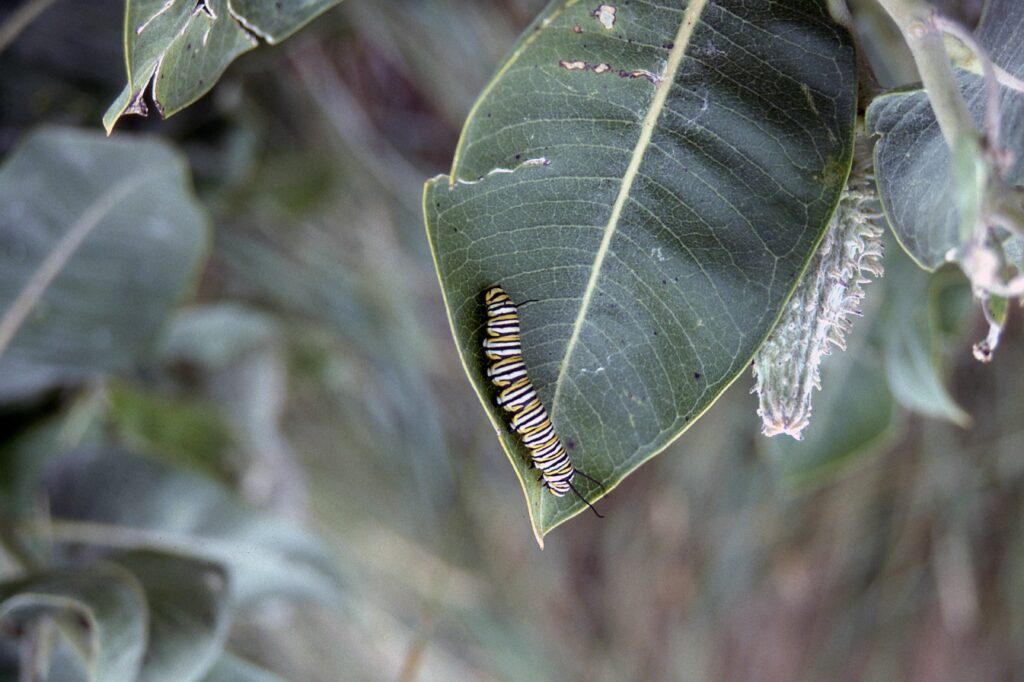
Antlion larvae demonstrate remarkable engineering intelligence through their construction of perfectly conical pit traps in loose sand or fine soil. These seemingly simple insects calculate the precise angle of repose for the soil they’re working with—the steepest angle the particular sand particles can maintain without sliding—creating a pit where any insect that ventures over the edge will slide helplessly to the bottom. The antlion positions itself just beneath the sand at the pit’s center, with only its powerful jaws exposed to seize prey that falls in. When prey attempts to climb out, the antlion ingeniously throws sand at the escaping insect, triggering small avalanches that bring the victim back within reach. Perhaps most impressively, antlions can adjust their pit construction techniques based on the properties of available soil and local environmental conditions, and will rebuild damaged pits with precise geometric consistency. This ability to engineer effective traps using principles of physics and soil mechanics represents a form of intelligence that transcends the antlion’s modest neural capacity.
Conclusion: Rethinking Insect Intelligence
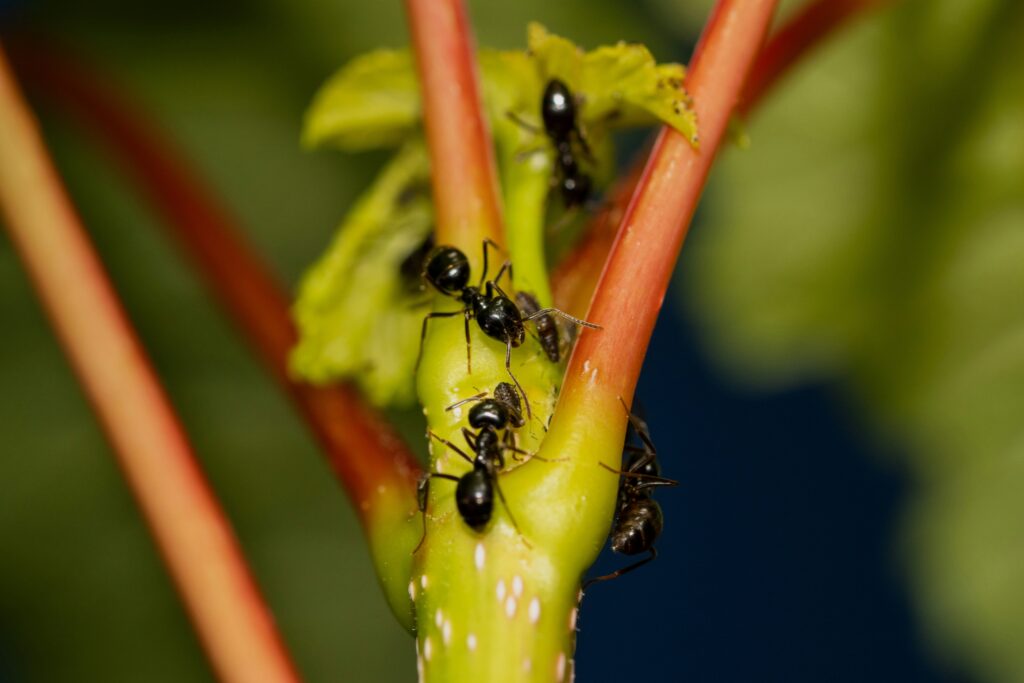
The remarkable defensive and survival strategies employed by these insect species challenge our understanding of what constitutes intelligence in the natural world. Despite their tiny brains and relatively simple neural structures, these creatures demonstrate sophisticated problem-solving abilities, complex learning, and adaptability that have allowed them to thrive for hundreds of millions of years. The diverse ways insects outsmart their predators—from complex chemical defenses to elaborate mimicry, from architectural engineering to collective intelligence—reveal that evolutionary pressures have created alternative pathways to intelligent behavior that don’t necessarily require large brains. Perhaps most humbling is the realization that many of these survival mechanisms represent solutions to complex problems that human engineers and scientists are still working to understand and replicate. As we continue to study these remarkable creatures, we may discover that insect intelligence is not lesser than vertebrate intelligence—just profoundly different, elegantly adapted to their unique ecological niches and survival challenges.

